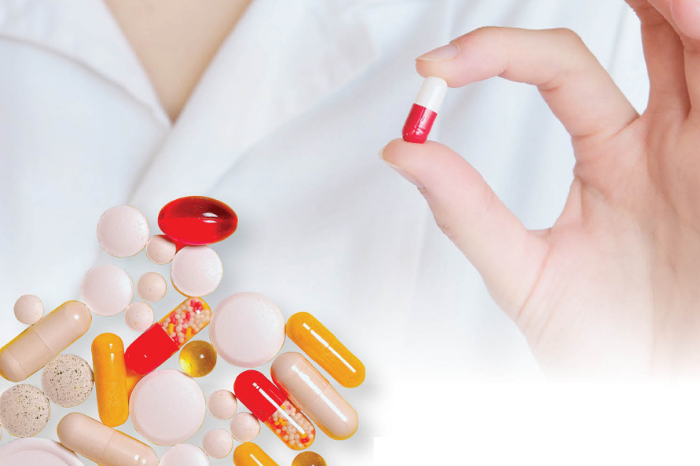
Although fermented foods and cultured dairy are a great source of beneficial bacteria and should form an integral part of a balanced diet, they may not deliver the powerful therapeutic doses required to overcome specific illness or combat the negative effects of an antibiotic treatment.
Additionally, those that are lactose intolerant may have difficulty deriving enough probiotics from foods as they cannot consume cultured dairy such as kefir and yogurt (at least until their inner ecosystem – balance of beneficial bacteria – has been restored).
Primal Harvest Probiotic supplements allow the consumer to choose a specific clinically proven strain or combination of strains they wish to implement into their diet. And finally, supplements are quick and easy, which is especially convenient when traveling.
That said, walking into your local health food store to purchase your first probiotic supplement can be overwhelming, confusing and even frustrating. There are so many brands offering different types of probiotics. Some are refrigerated, while others are not. Some come in capsules or pills, while others are sold in liquid or powder format.
The following guidelines should help you sort through all of these options and choose a high quality supplement that works for you.
Precautions
There are no known dangerous strains from either the Bifidobacterium or Lactobacillus species. Additionally, Streptococcus thermophilus (yogurt starter), Lactococcus lactis (buttermilk starter), and Saccharomyces boulardii (beneficial yeast) are all safe to consume in large doses.
Still, it is best to consult your doctor about taking probiotics if you suffer from a serious immune deficiency disorder such as AIDS or Cancer, are taking prescription drugs or are receiving chemotherapy, radiation therapy or other serious medical intervention therapy.
You should also consult your doctor before taking Saccharomyces boulardii (beneficial yeast) if you are pregnant or have adverse reactions to yeast products.
Must Read: 6 Tips to make healthy eating a breeze
Strains Matter
It is essential to choose a product that lists its bacteria by Genus, Species and Strain.
As I have mentioned before, not all strains are equal, and if the manufacturer doesn’t list specific strains, it is likely because they are using inferior ones.
For example, simply listing Lactobacillus or L. acidophilus is not enough. The full strain name, L. acidophilus DDS-1, must be displayed on the label.
Bacterial Counts
Look for supplements that clearly state the number of CFUs (colony forming units of live bacteria) contained per serving.
Keep in mind that 3-5 billion CFUs per day is considered a maintenance dose for healthy individuals, while therapeutic doses for severe illness can exceed 1 trillion CFUs per day.
At minimum, a good probiotic supplement should provide at least 1 billion CFUs per serving.
Stick to Quality Brands
Probiotic supplements aren’t regulated by the FDA and therefore there is no guarantee that a supplement contains the strains listed or that the microbes will still be viable by the time the product is purchased.
As an example, a study of probiotic supplements conducted by ConsumerLab in 2022 found that 1/3 of the 25 probiotics tested contained less than 1% of the stated bacteria.
More recent studies by ConsumerLab and Consumer Reports have produced similar results.
The bottom line is that many probiotic supplements deliver far fewer bacteria than stated on the label, and some provide fewer than 1 billion CFUs, which is considered the minimum effective serving.
Expiration Date
Make sure the label clearly states an expiration date. Some products will list a manufacture date which tells you nothing about how long the microbes will remain viable.
Added Ingredients – Prebiotics
Many probiotic supplements contain prebiotics such as inulin, FOS or polydextrose. These prebiotics are helpful in that they provide the microflora (beneficial bacteria) with a food source as it moves through the digestive tract, thus increasing viability.
Other ingredients such as herbs, vitamins and minerals don’t add or subtract from the effectiveness of the supplement, though you obviously want to avoid products that contain any type of processed sugars or other unnatural preservatives.
Refrigeration
Most probiotic supplements have been freeze dried; that is frozen and all water removed. This results in a probiotic powder that is activated when ingested with food or water.
Although probiotics can survive at room temperature for several days, it is best to buy supplements that have been kept refrigerated as this slows down the metabolism and essentially puts the microbes in a state of suspended animation.
There are very few exceptions, Florastor for example, to the rule that a supplement must be kept refrigerated to maintain optimal viability over a period of time.
If prematurely exposed to water, heat (above 80 degrees) or excess humidity, the bacteria will “wake up” and begin to regenerate. They will quickly run out of food (limited to the confines of their container) and die off.
Delivery Mechanism
Probiotic supplements are delivered in a variety of ways including liquids, powders, capsules, packets, tablets and chewable wafers.
Capsules and Single Use Packets provide the safest and longest lasting delivery mechanism as they protect the microbes from moisture and air. Additionally, capsules with enteric coatings may provide additional protection from stomach acids, thus ensuring a greater number of microbes reach the intestine.
Powders may be more economical, but there is a chance of exposure to moisture and air each time the container is opened and closed. One benefit to taking powders is that exposing beneficial bacteria to the mouth can reduce cavities and alleviate bad breath.
Tablets and Chewable Wafers are not ideal as there is often heat involved during processing. Manufactures may compensate by starting with a greater CFU count than listed on the label, but I still wouldn’t recommend this format.
Liquids are perhaps the least stable form of delivery as the microbes start regenerating when exposed to water. Remember, we don’t want the beneficial bacteria to “wake up” until they have entered our digestive tract.
Also Read: Best Mobile apps for weight loss


